40 Trichocereus Varieties: Identification and Care Guide
Are you a cactus lover looking for unique and fascinating species to add to your collection? Look no further than the incredible Trichocereus family! These cacti are native to South America and come in various shapes, sizes, and colors, making them a true delight for any enthusiast. Let’s dive into the exciting details!
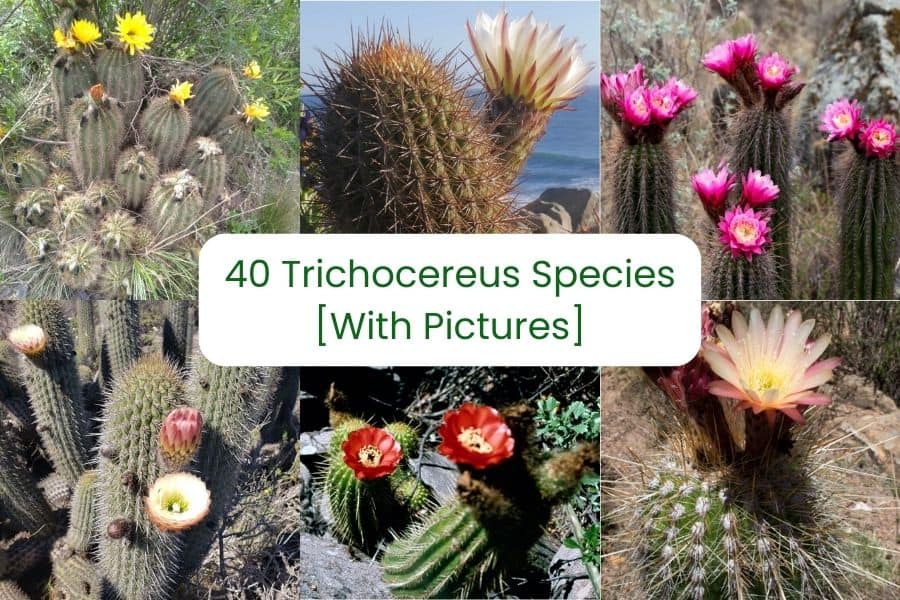
Contents
- 1 Trichocereus Pachanoi: The Star of the Show
- 2 Types Of Trichocereus Species
- 2.1 Trichocereus angelesiae
- 2.2 Trichocereus atacamensis
- 2.3 Trichocereus atacamensis subs. pasacana
- 2.4 Trichocereus bertramianus
- 2.5 Trichocereus bolligerianus
- 2.6 Trichocereus bridgesii
- 2.7 Trichocereus camarguensis
- 2.8 Trichocereus candicans
- 2.9 Trichocereus caulescens
- 2.10 Trichocereus chalaensis
- 2.11 Trichocereus chiloensis
- 2.12 Trichocereus chiloensis subs. eburneus
- 2.13 Trichocereus chiloensis subs. litoralis
- 2.14 Trichocereus clavatus
- 2.15 Trichocereus cuzcoensis
- 2.16 Trichocereus deserticolus
- 2.17 Trichocereus faundezii
- 2.18 Trichocereus huascha
- 2.19 Trichocereus huascha subs. robusta
- 2.20 Trichocereus macrogonus
- 2.21 Trichocereus macrogonus subs. pachanoi
- 2.22 Trichocereus macrogonus subs. peruvianus
- 2.23 Trichocereus nigripilis
- 2.24 Trichocereus quadratiumbonatus
- 2.25 Trichocereus rowleyi
- 2.26 Trichocereus schickendantzii
- 2.27 Trichocereus schoenii
- 2.28 Trichocereus serpentinus
- 2.29 Trichocereus skottsbergii
- 2.30 Trichocereus smrzianus
- 2.31 Trichocereus spachianus
- 2.32 Trichocereus strigosus
- 2.33 Trichocereus tacaquirensis
- 2.34 Trichocereus tarijensis
- 2.35 Trichocereus terscheckii
- 2.36 Trichocereus thelegonus
- 2.37 Trichocereus tunariensis
- 2.38 Trichocereus vollianus
- 2.39 Trichocereus walteri
- 2.40 Trichocereus werdermannianus
- 3 How to Care for Trichocereus Cacti
- 4 Propagating Trichocereus Species Plants
Trichocereus Pachanoi: The Star of the Show
One of the most popular Trichocereus species is the Trichocereus Pachanoi, also known as the San Pedro cactus. This multi-stemmed beauty can reach up to 19 feet tall (wow!) and features light or dark green stems covered in spines (though some varieties are spineless). But wait, there’s more! This cactus blooms at night with incredibly fragrant flowers. No wonder it has so many Spanish nicknames like ‘wachuma’ and ‘giganton’!
Types Of Trichocereus Species
Now, let’s explore some of the other amazing Trichocereus varieties:
Trichocereus angelesiae
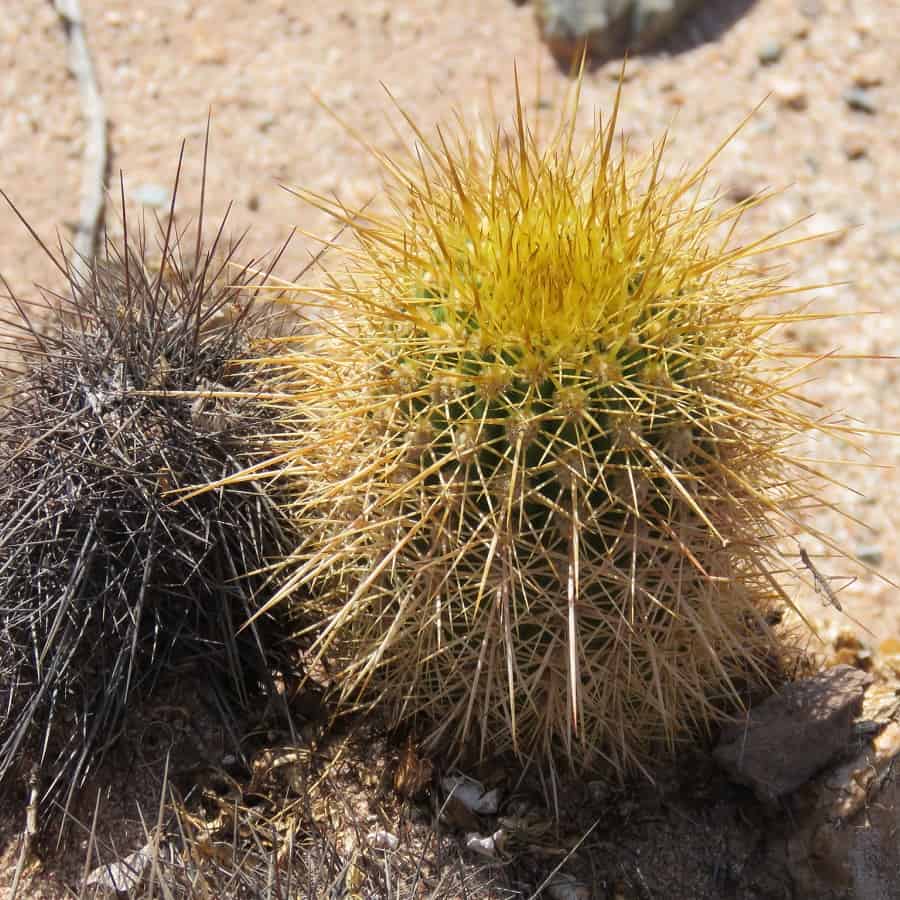
This day-blooming beauty sports white flowers up to 9.5 inches long! With 14-22 ribs, it looks strikingly similar to T. strigosus, making positive ID tricky unless spotted in its native region.
Trichocereus atacamensis
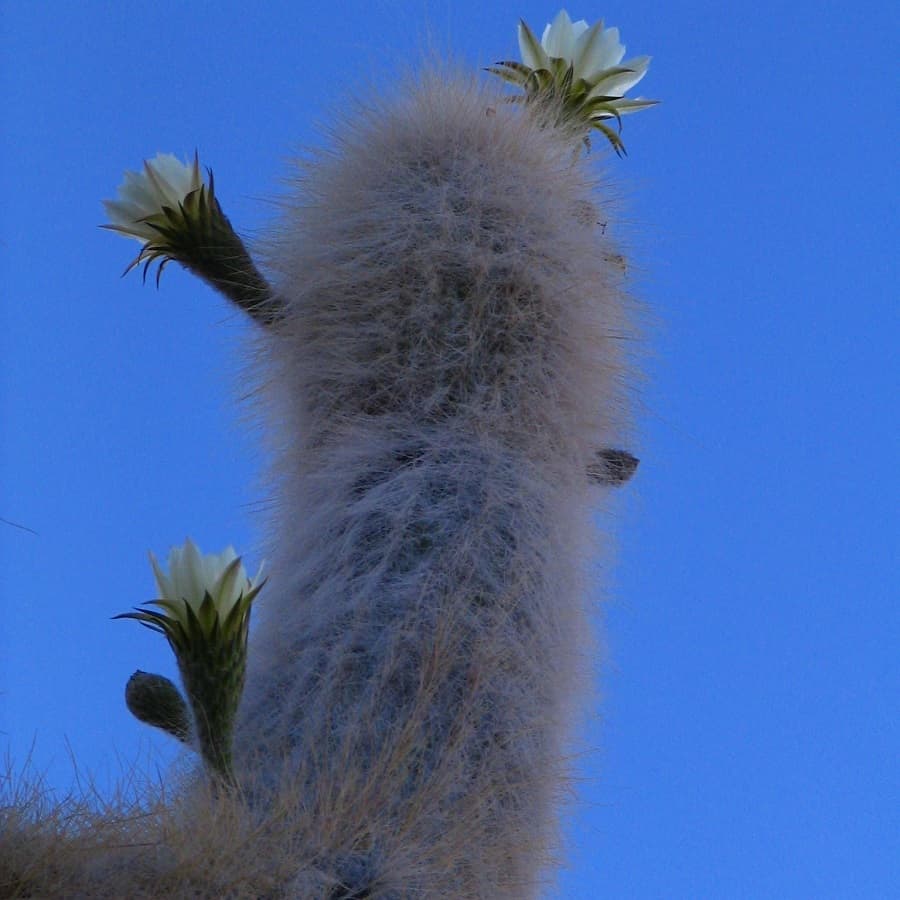
Prepare to be wowed by this tall columnar cactus reaching up to 23-33 feet! The subspecies atacamensis is an unbranched Chilean giant, while subsp. pasacana from Argentina/Bolivia branches out Saguaro-style. Those wicked spines range from cream to dark brown and can reach over 1 foot long!
Trichocereus atacamensis subs. pasacana

Trichocereus bertramianus
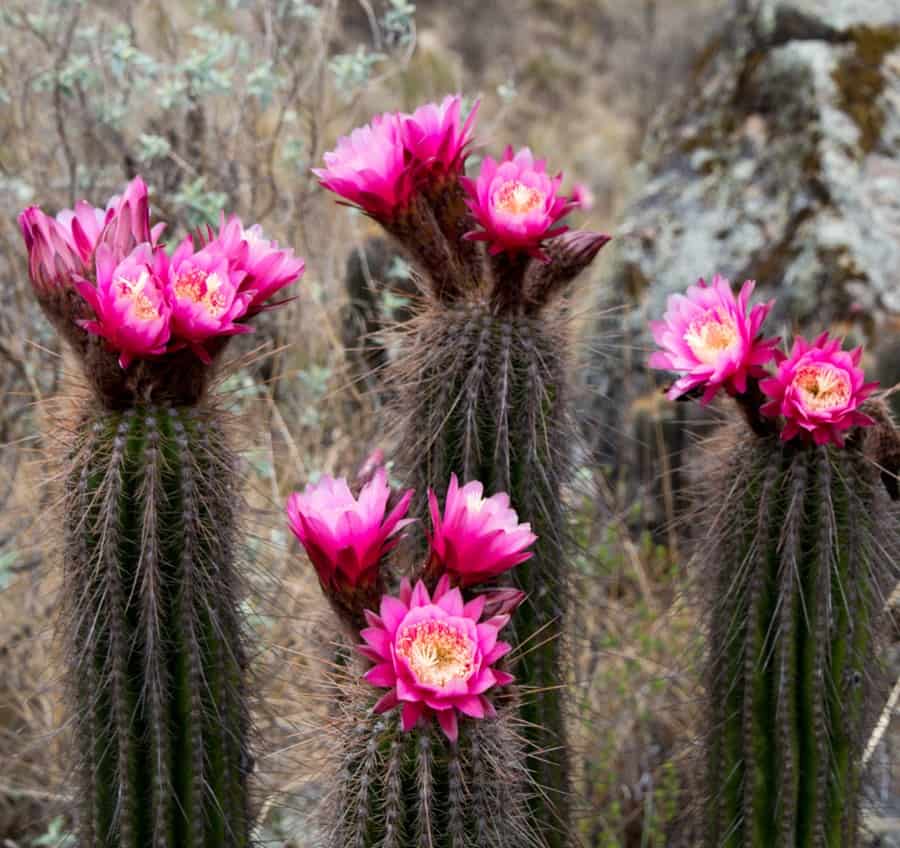
Part of the T. tarijensis group, this striking Bolivian/Argentine native towers with white flowers rather than the typical magenta blooms. Once lumped into Echinopsis, it now rightfully stands apart as its own distinct Trichocereus species.
Trichocereus bolligerianus
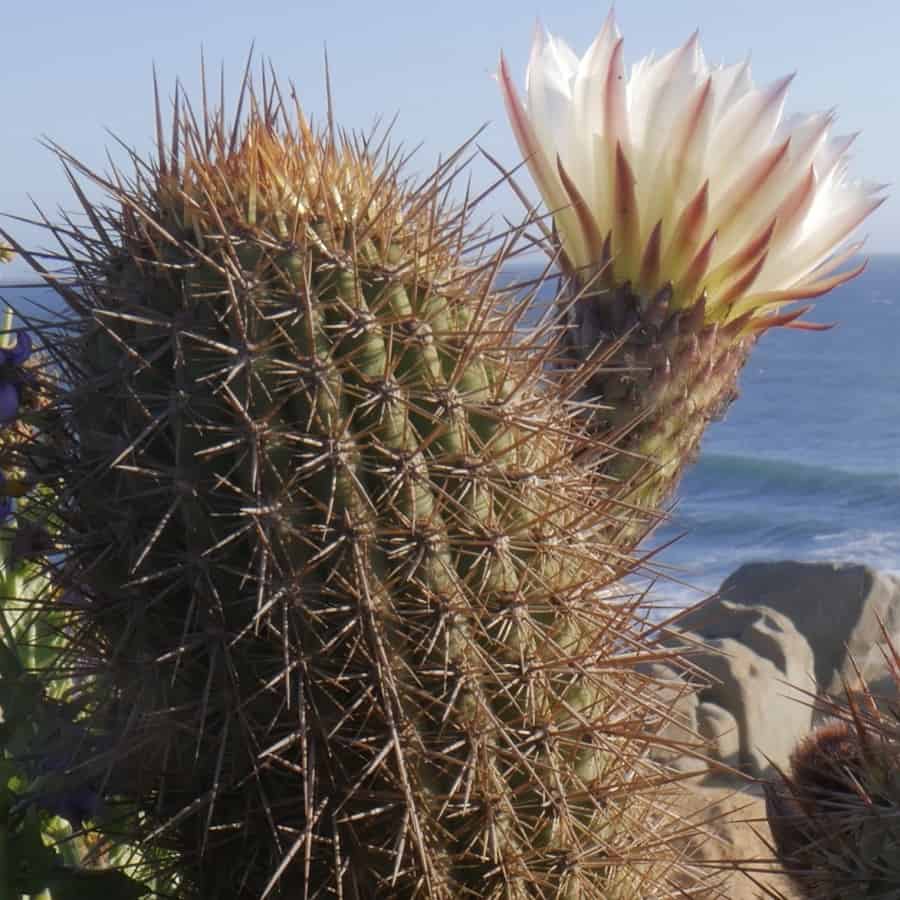
A coastal Chilean sprawler that hugs the ground, never straying far from the salty sea air. Though the flowers resemble T. chiloensis, the decumbent growth habit and genetic markers confirm its species status.
Trichocereus bridgesii
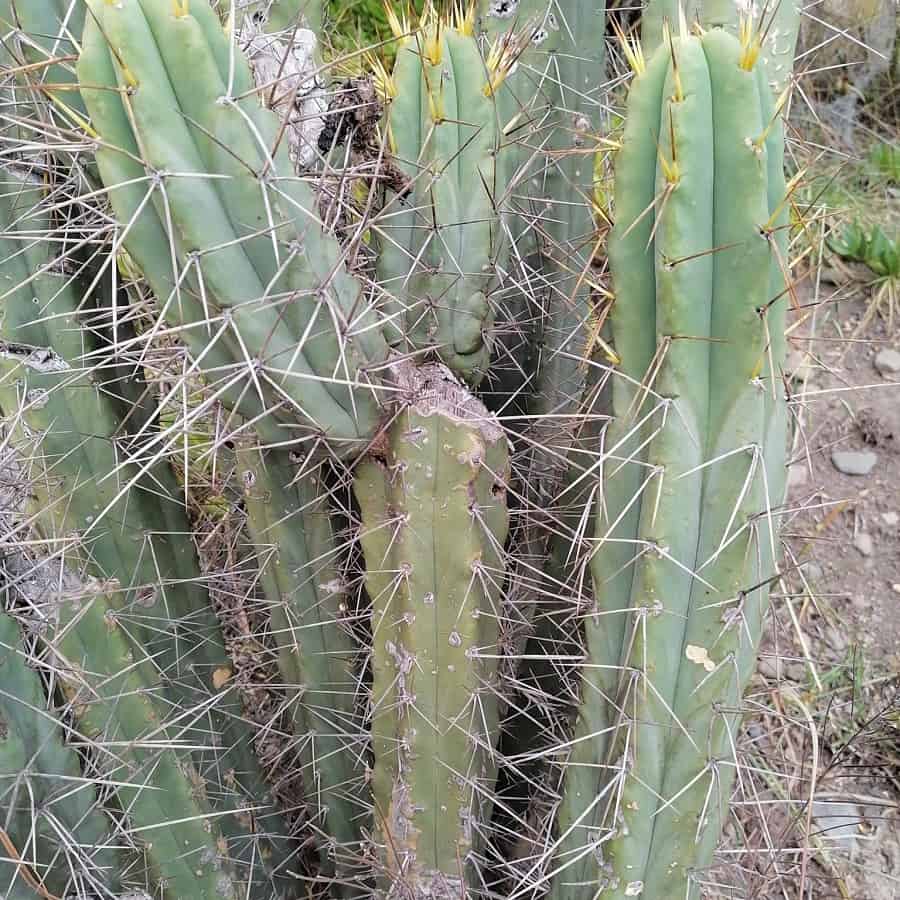
Often confused with the famed San Pedro due to its light green, tree-like 5+ meter height and thick 6+ inch stems! The honey to brown spines and 4-8 ribs help distinguish this pricey specimen.
Trichocereus camarguensis
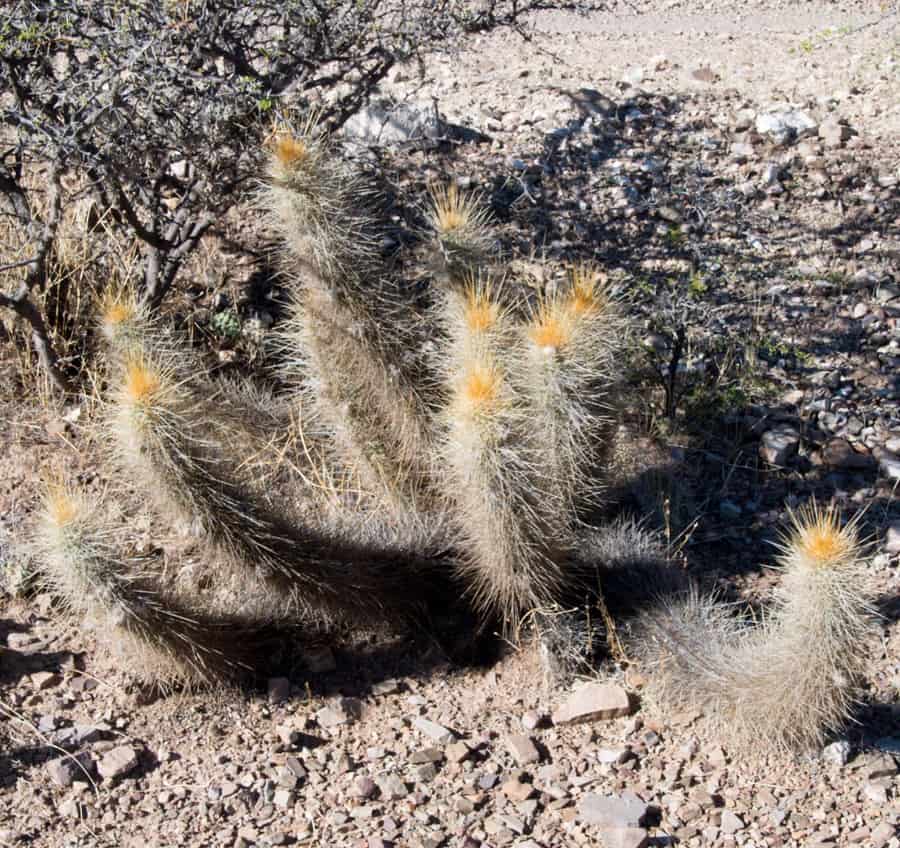
A petite lean, mean Bolivian scene-stealer under 2 feet tall! The bright green stems sport a mop of golden spines over the 13-15 ribs. Its prostrate creeping defies typical upright cactus growth.
Trichocereus candicans
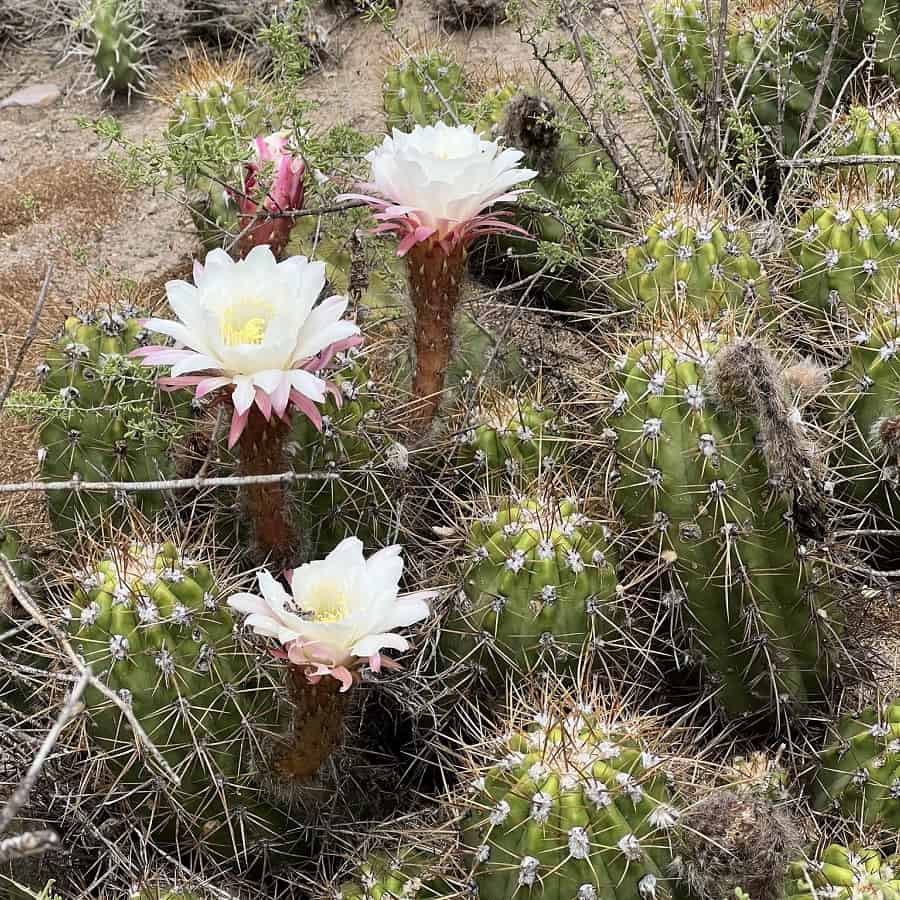
Trichocereus candicans is a compact, clustering cactus that forms wide clumps up to 10 feet across. Despite its small 2.5 foot tall stems, this variety really shines with its incredible flowers. While typically white, T. candicans has been heavily hybridized, resulting in blooms that can appear in stunning shades of yellow, red, and more. The fragrant flowers are true showstoppers, reaching up to 8 inches wide!
This variability in flower color makes T. candicans an excellent candidate for hybridization to introduce colored blooms into other Trichocereus species, including the famous San Pedro cactus. Its large, showy flowers that readily accept pollen from other varieties have allowed breeders to create some truly breathtaking new hybrids within this genus. For cactus enthusiasts, T. candicans offers a compact size combined with an amazing floral display in a range of eye-catching colors.
Trichocereus caulescens
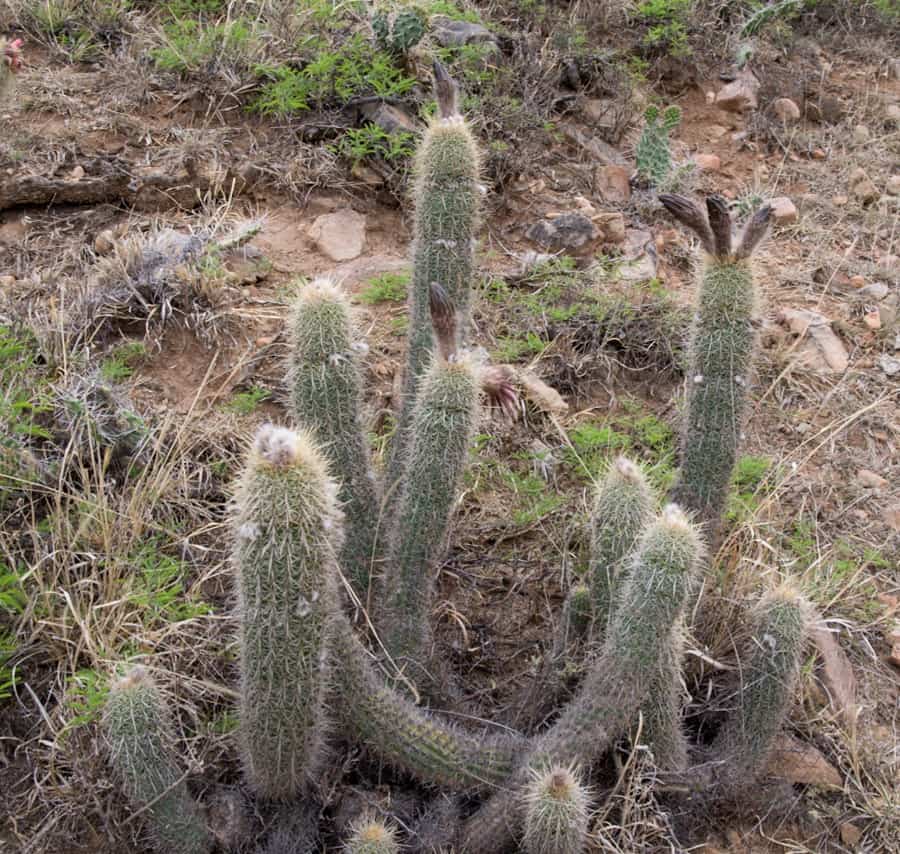
Trichocereus chalaensis
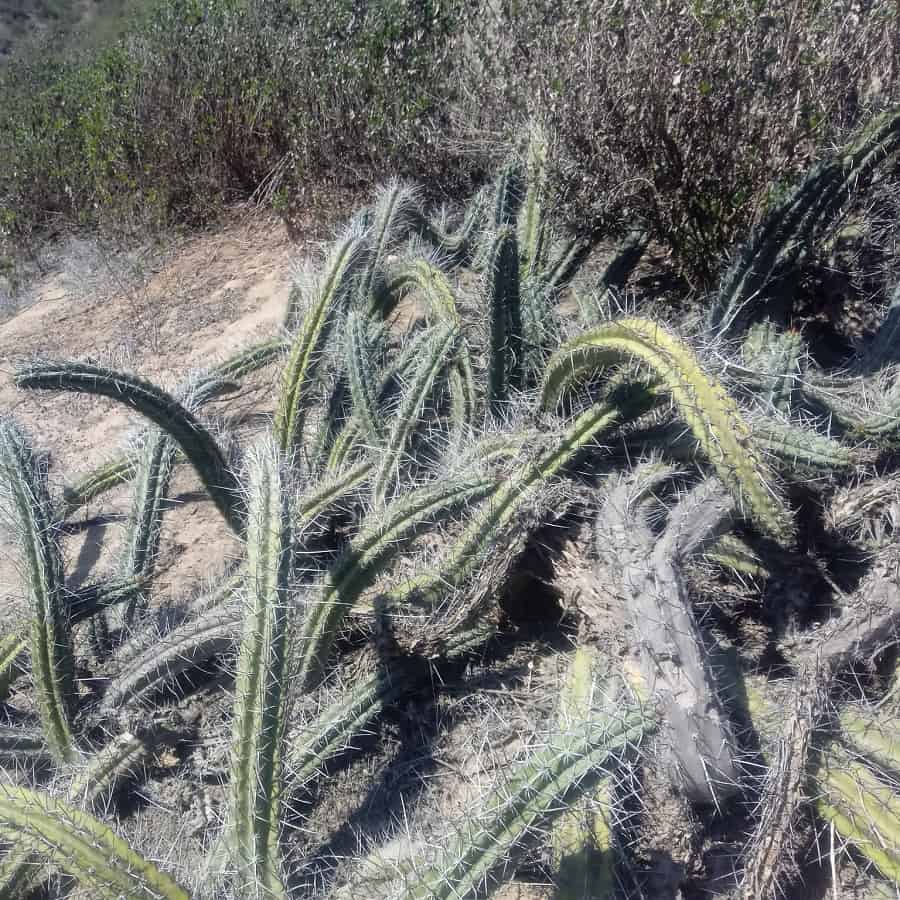
Hailing from Peru, this shrubby 10-16 foot tall cactus puts on a spiny show with its dark brown to red spines up to 3 inches long. The 7-9 ribbed stems have deeply furrowed peaks above each areole. A sun-loving rocky slope dweller.
Trichocereus chiloensis

One of Chile’s most iconic cacti, this tree-like columnar can tower up to 21-23 feet tall! The 10-12 ribbed, up to 6 inch thick stems are armored with 2-4 inch central spines. The 3-5.5 inch white flowers linger for days.
Trichocereus chiloensis subs. eburneus
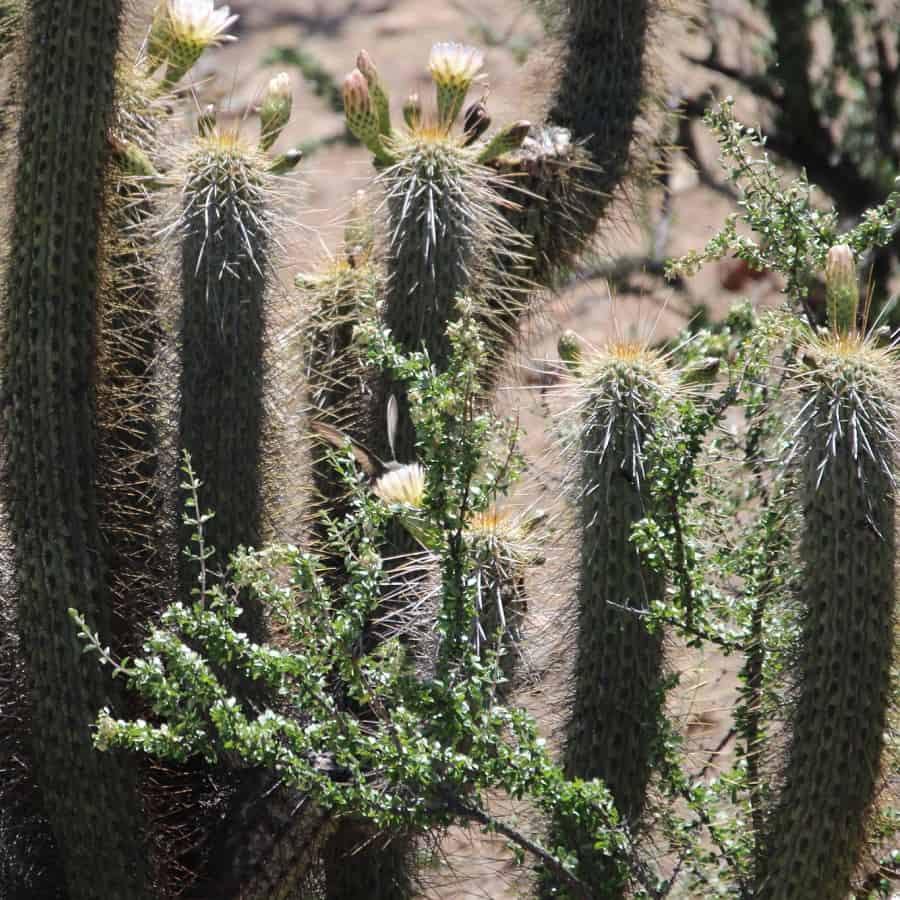
Trichocereus chiloensis subs. litoralis
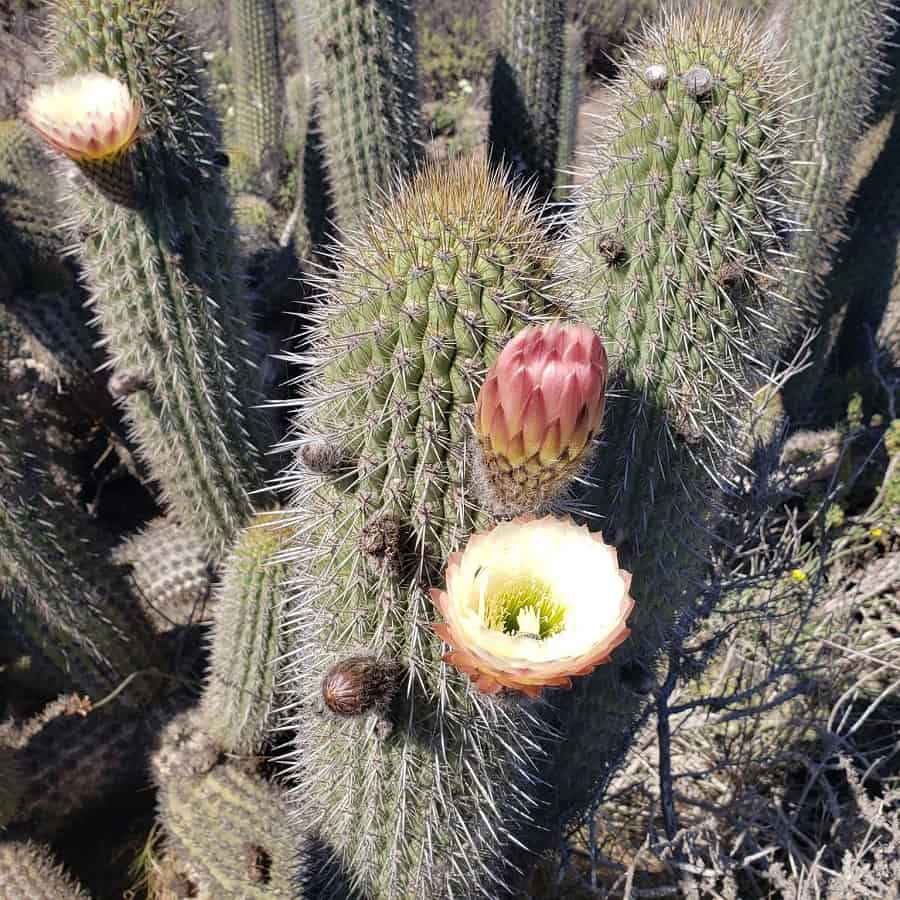
Trichocereus clavatus
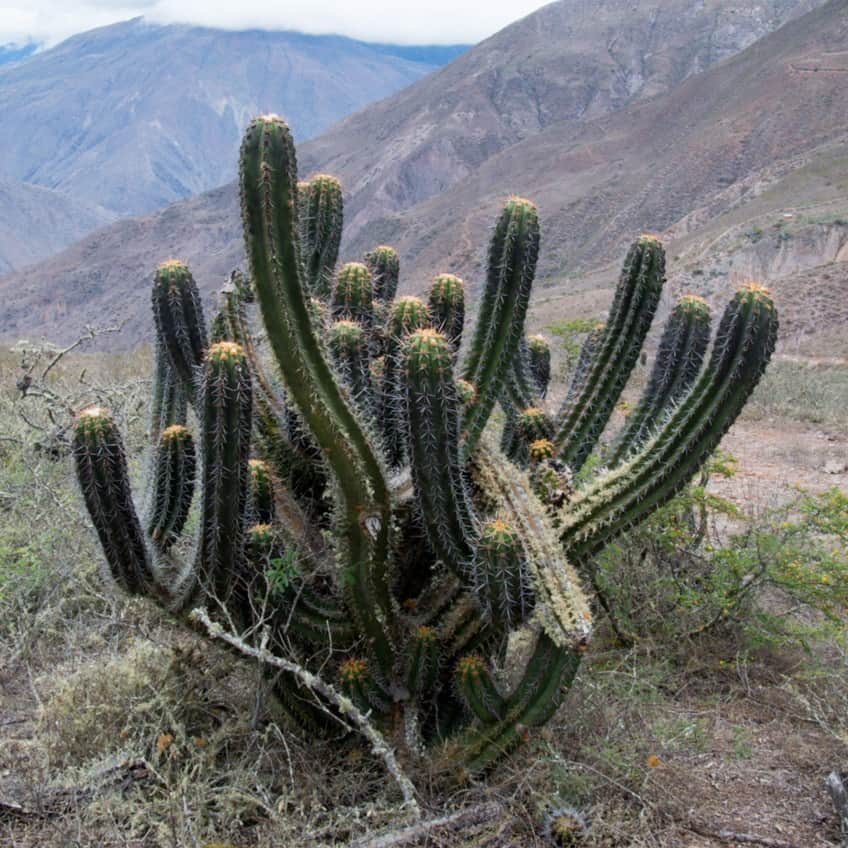
Trichocereus cuzcoensis
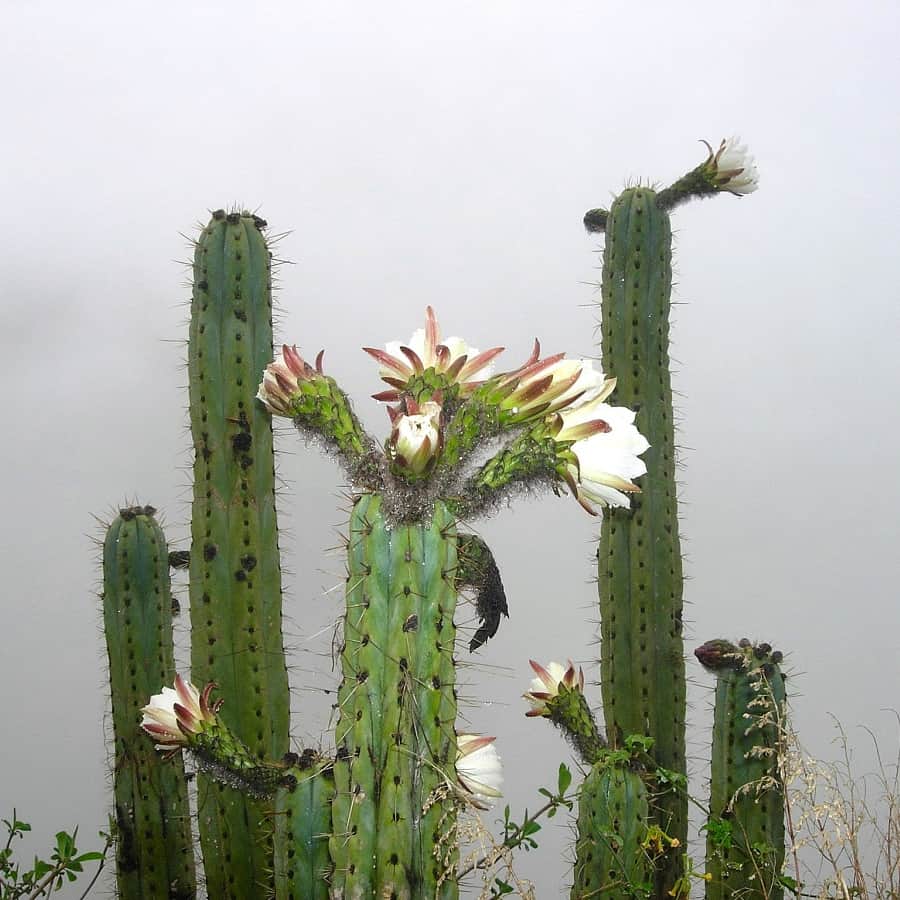
A Cusco, Peru native reaching over 16 feet, this night-bloomer dazzles with huge 6 inch white fragrant flowers. The 7-9 ribbed, heavily spined stems range from bright green when young to gray with black-tipped 2-4 inch spines.
Trichocereus deserticolus
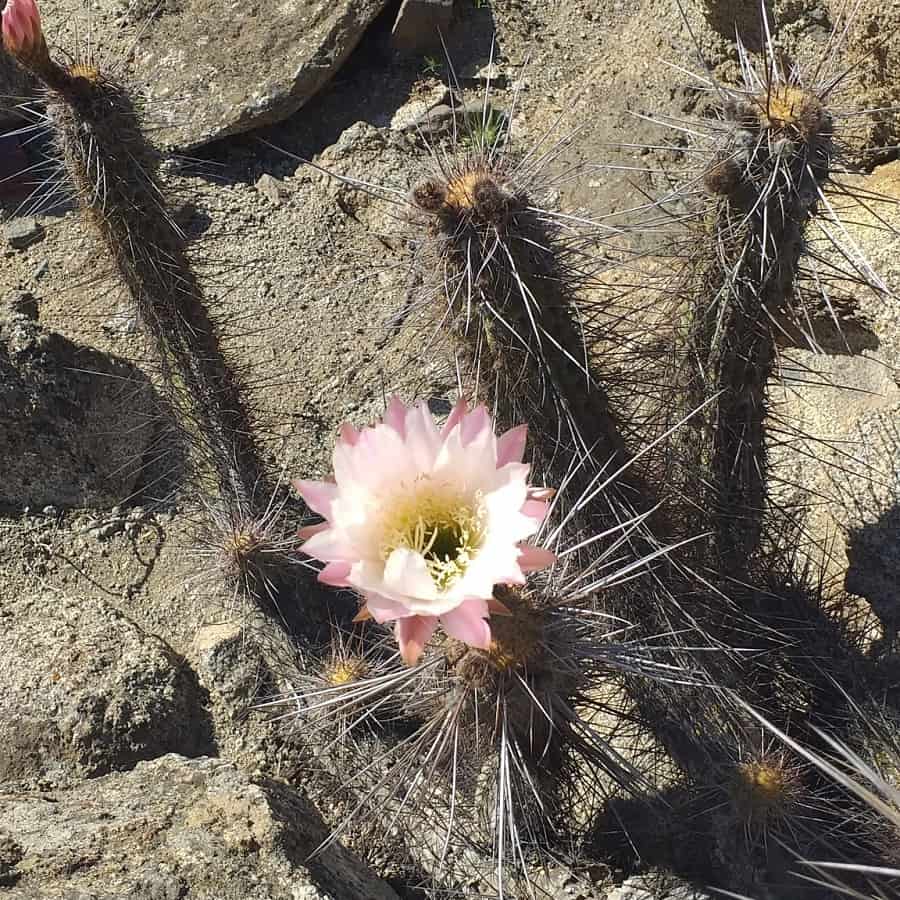
Don’t let the modest 3-6 foot height fool you – this branched beauty packs a punch with its 18-24 thin, reddish-brown radial spines per areole! The 9-13 ribbed, pale green stems produce small 2-5 inch white flowers.
Trichocereus faundezii
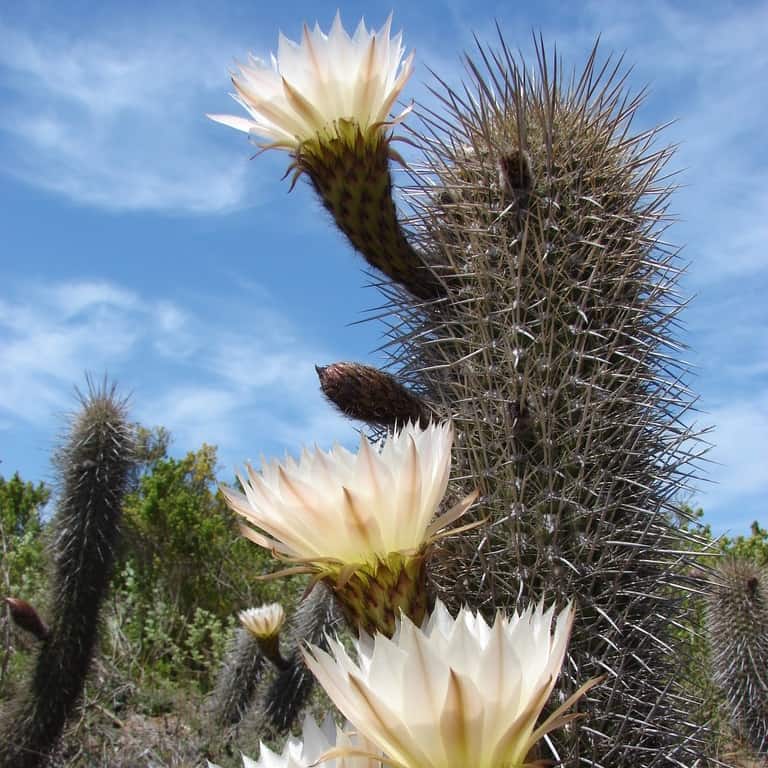
Trichocereus huascha
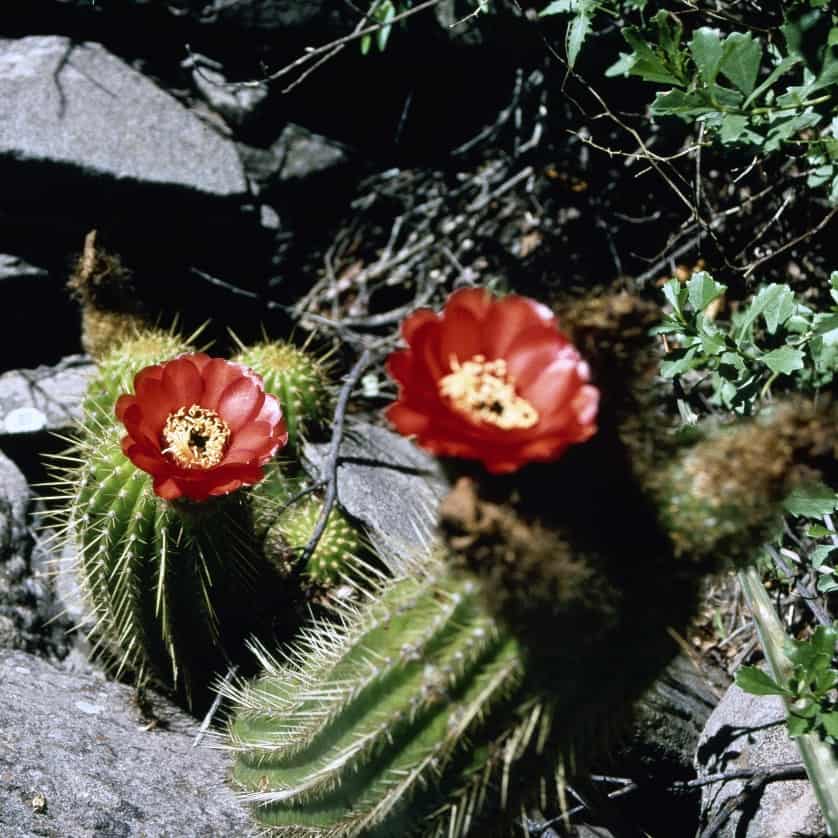
This versatile Argentine native can grow upright to 3.5 feet or creep along clumping abundantly. The 10-12 radial yellow spines reach 0.8 inches long over the up to 15 ribs. Wildly variable flower colors from yellow to red make great hybrids!
Trichocereus huascha subs. robusta
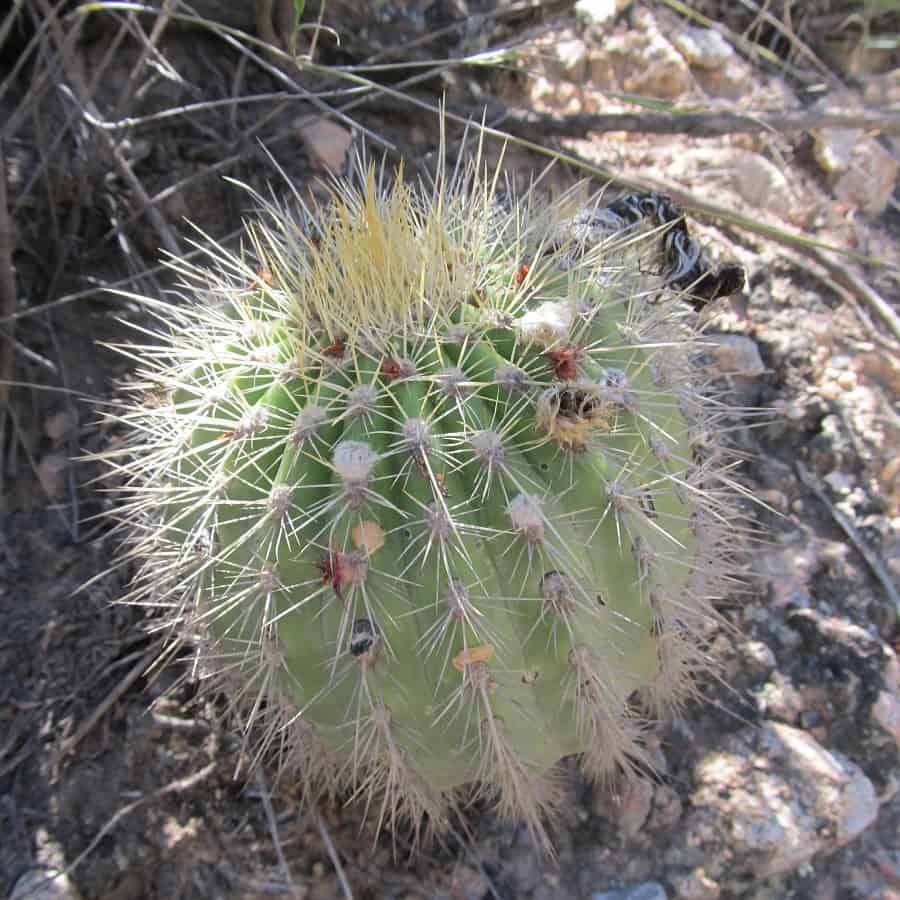
Trichocereus macrogonus
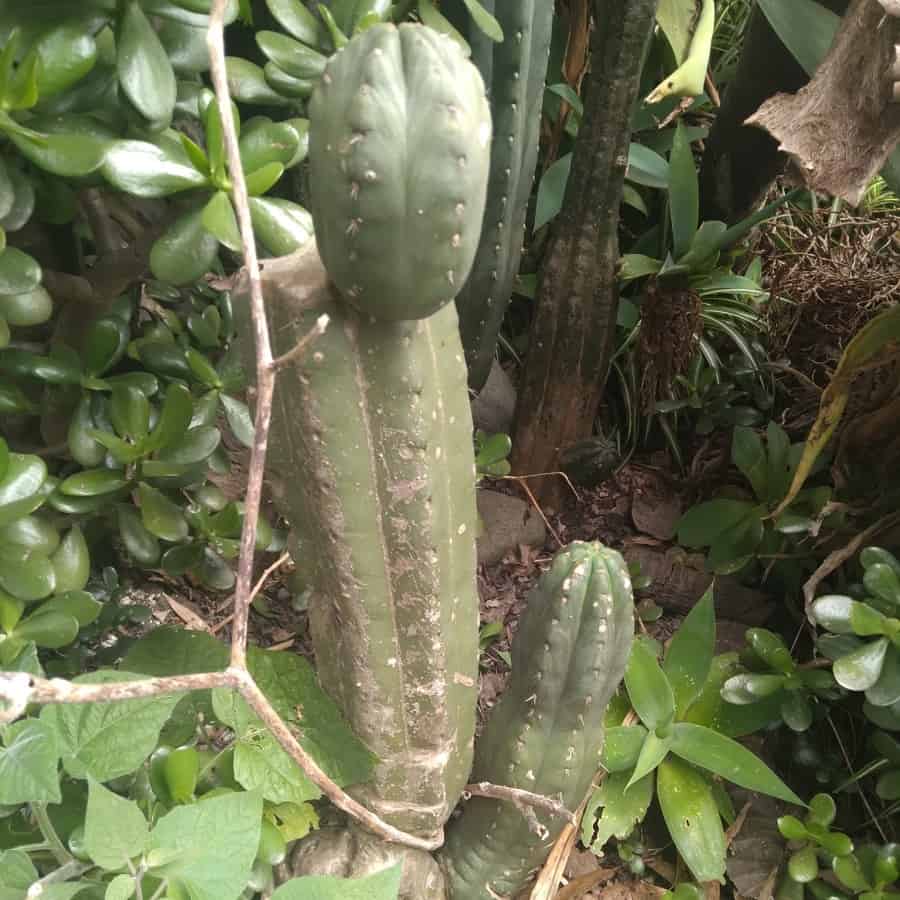
A frosty blue giant reaching up to 10 feet tall and over 2 inches thick! The 6-9 radial spines are joined by 1-3 monster central spines up to 4 inches long in shades of brown to gray. Huge 7-inch white night-blooming flowers top this columnar stunner.
Trichocereus macrogonus subs. pachanoi
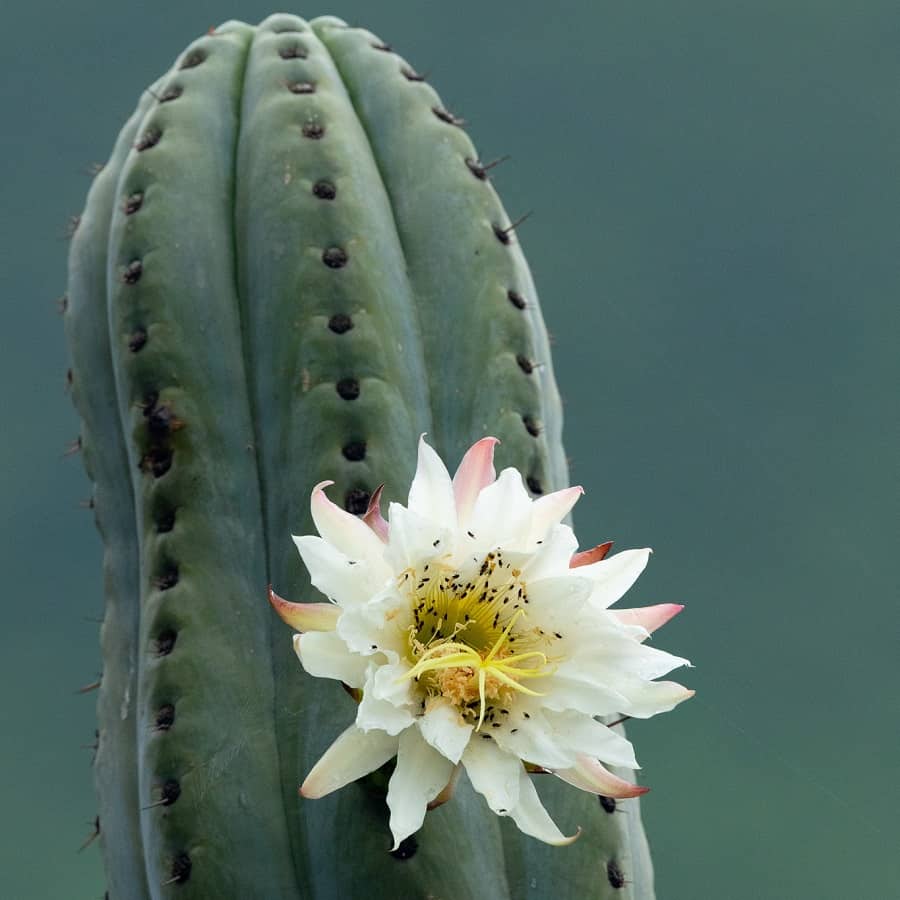
The legendary San Pedro cactus can survive frigid -5°F temperatures in its Andean homeland of Peru, Bolivia and beyond. At 6,600-10,800 feet elevation, this hardy night-bloomer awaits its 5-8 year flowering cycle with anticipation.
Trichocereus macrogonus subs. peruvianus
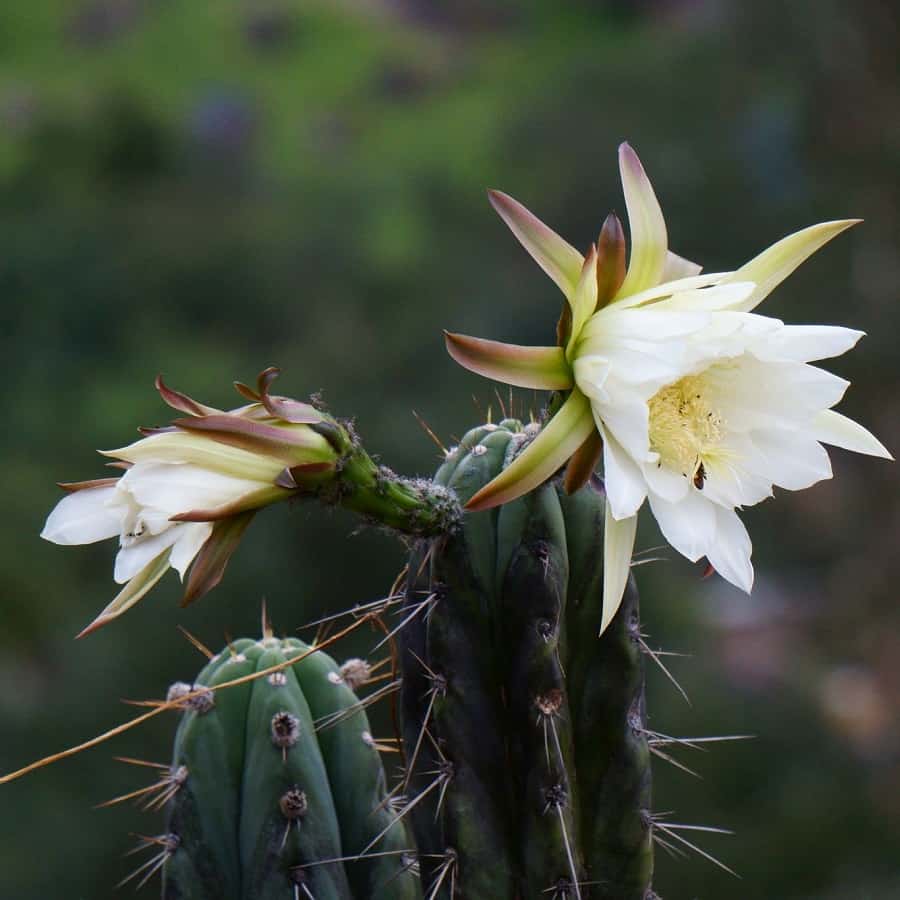
Trichocereus nigripilis

From sparse coastal hills, this creeping, multi-branched black sheep of the family emerges basally with 8-15 ribbed, 2-3 inch thick green stems. The 3-4 inch white flowers arise from the apex.
Trichocereus quadratiumbonatus

Trichocereus rowleyi

Fiery red or snowy white – you never know what kaleidoscopic bloom will arise on this recently discovered Peruvian species! The heavily spined, blue-green 13-18 ribbed stems reach 1.5 feet tall.
Trichocereus schickendantzii
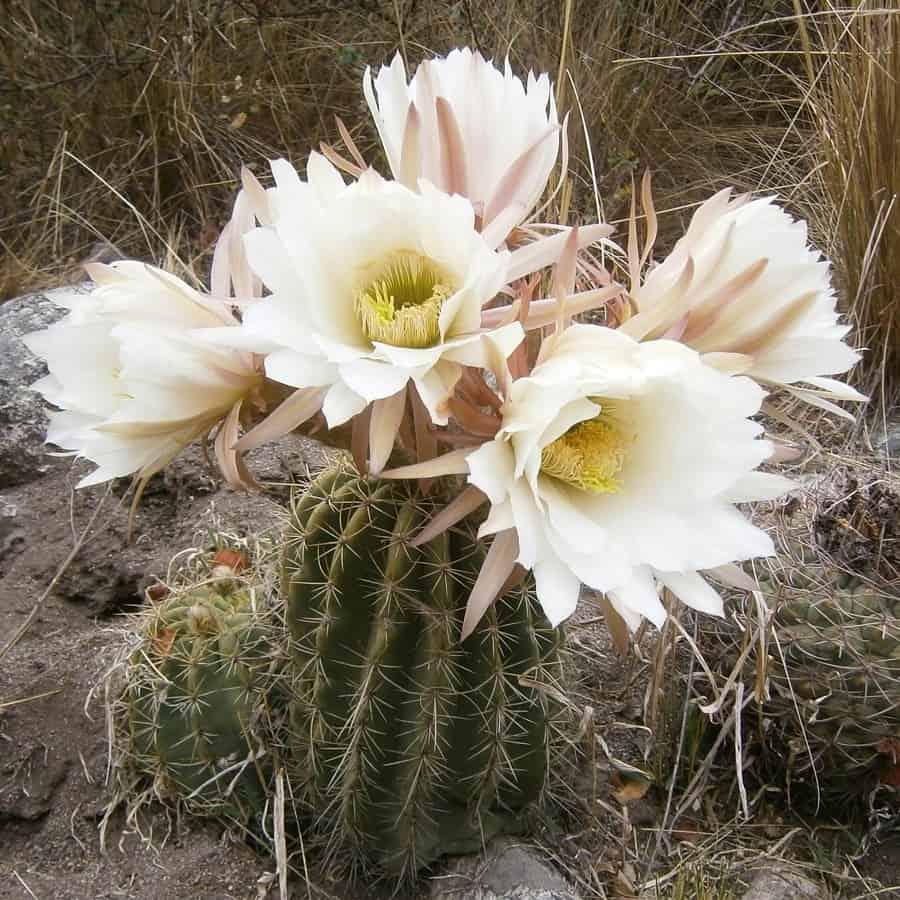
A basally clustering stunner from Argentina with tight clumps of 1-2.5 foot tall, 2-3 inch thick stems plastered in 1-2 inch yellow radial spines. The showy 4-8 inch white flowers bloom from the apex.
Trichocereus schoenii
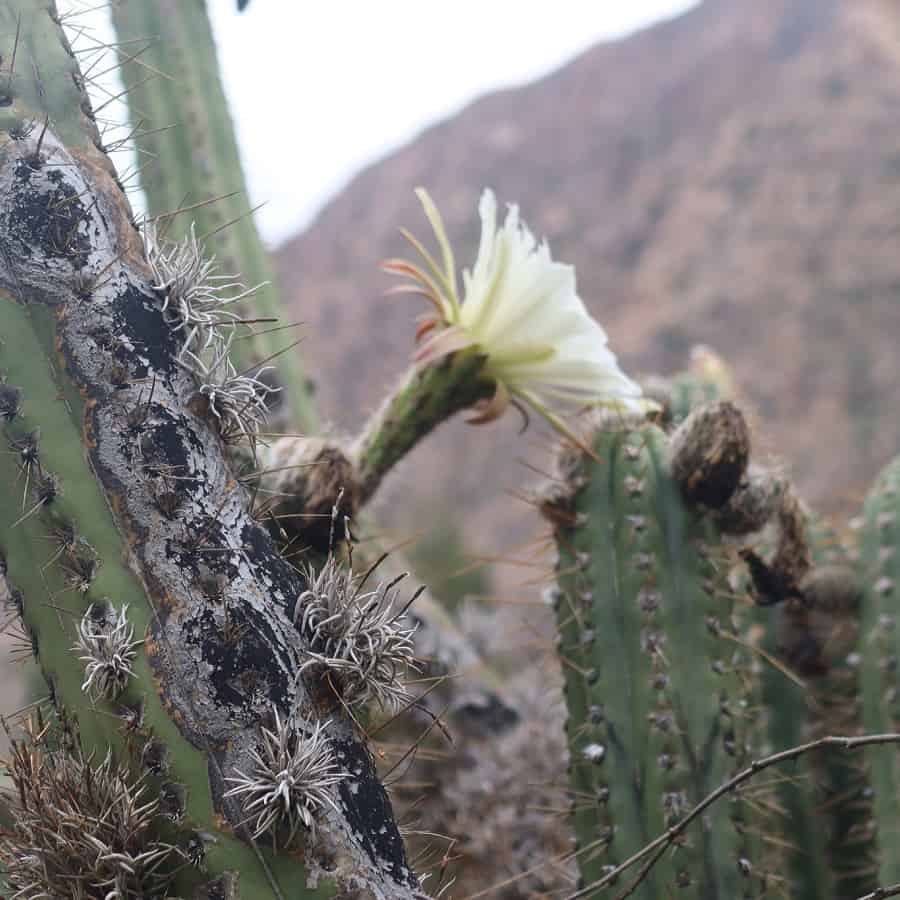
An ultra-rare, heavily spined Peruvian dwarf reaching under a foot tall. This distinct micro-species separates from lookalikes by its unique elongated central spine.
Trichocereus serpentinus
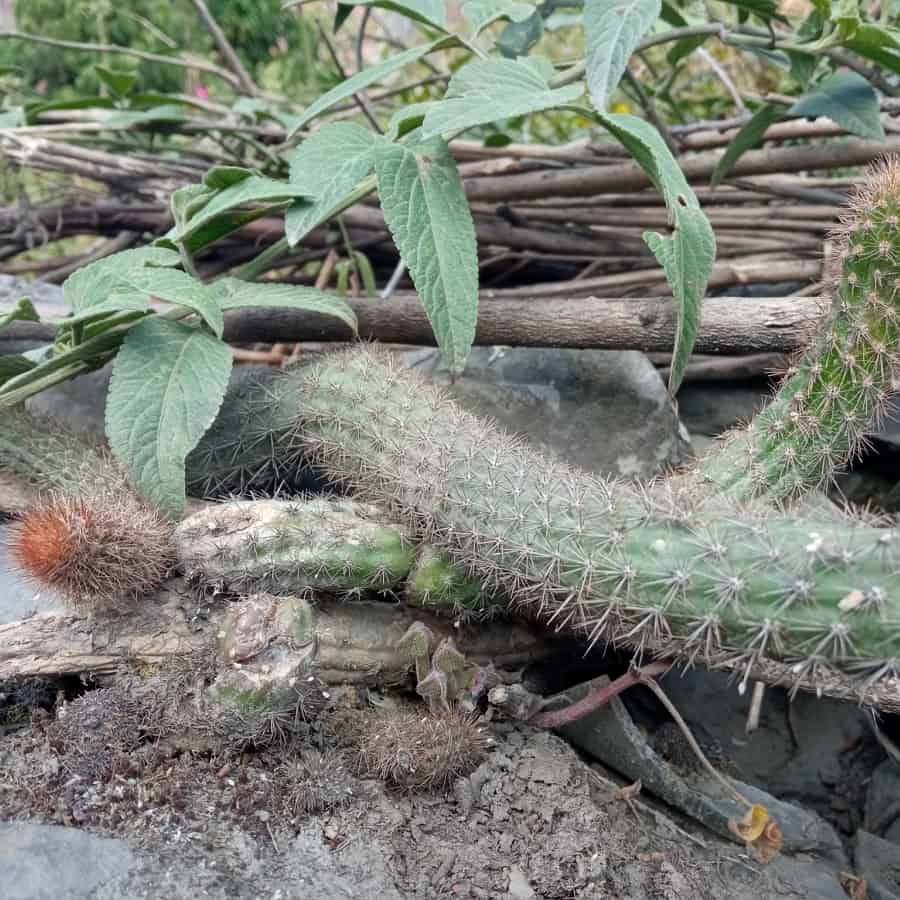
Trichocereus skottsbergii
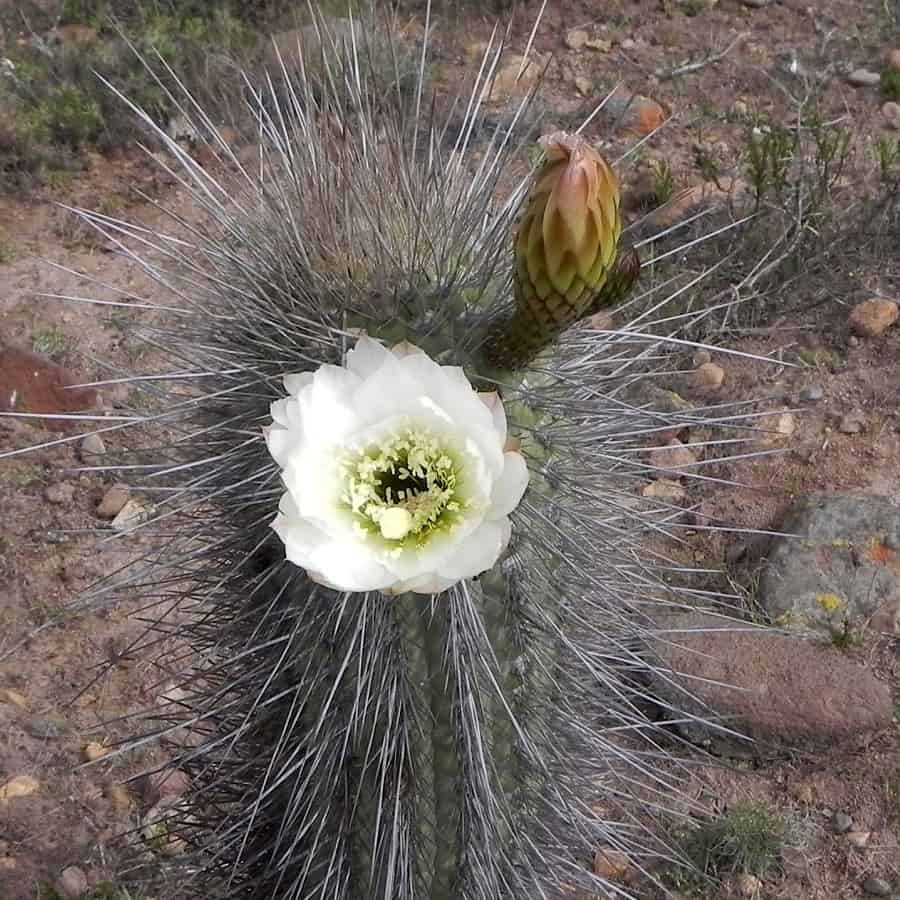
With 16-21 ribs compared to its Chilean cousin T. chiloensis’ 16-18, this tree-like columnar can be told apart – once you get past the shared dense white spination!
Trichocereus smrzianus
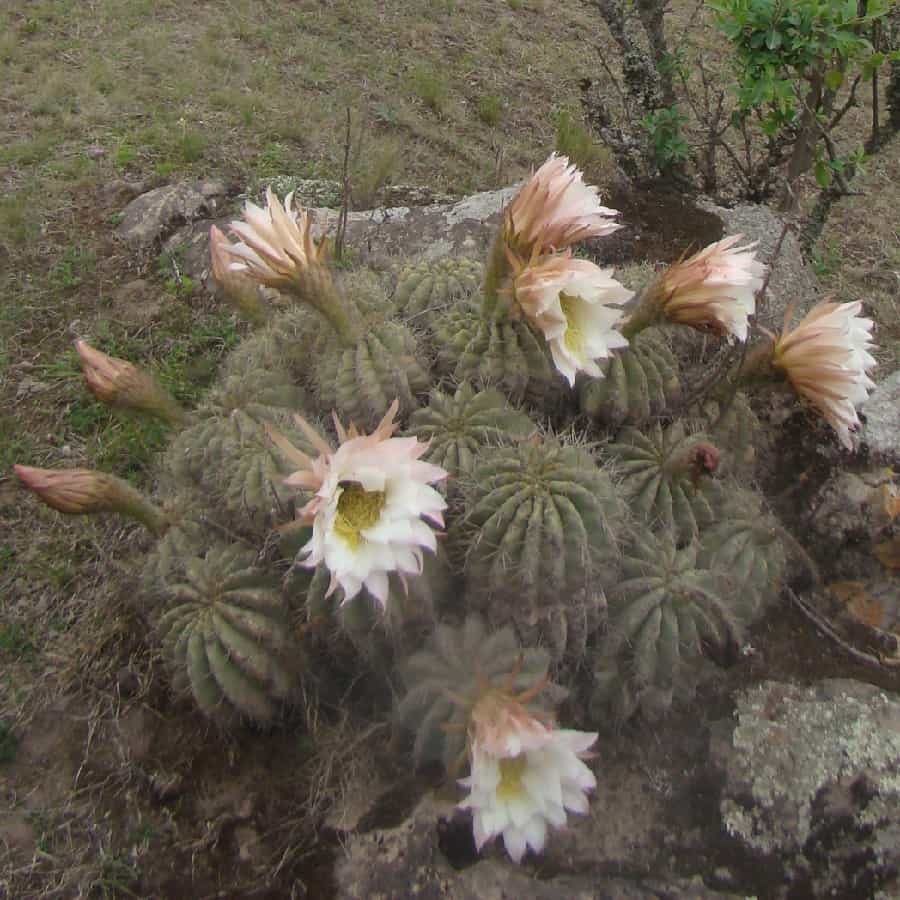
From Argentina, this ultra-variable cluster-former can reach 2 feet across with 10-15 ribbed, yellow-spined stems. The 4-8 inch white flowers resemble its lookalike T. schickendantzii.
Trichocereus spachianus
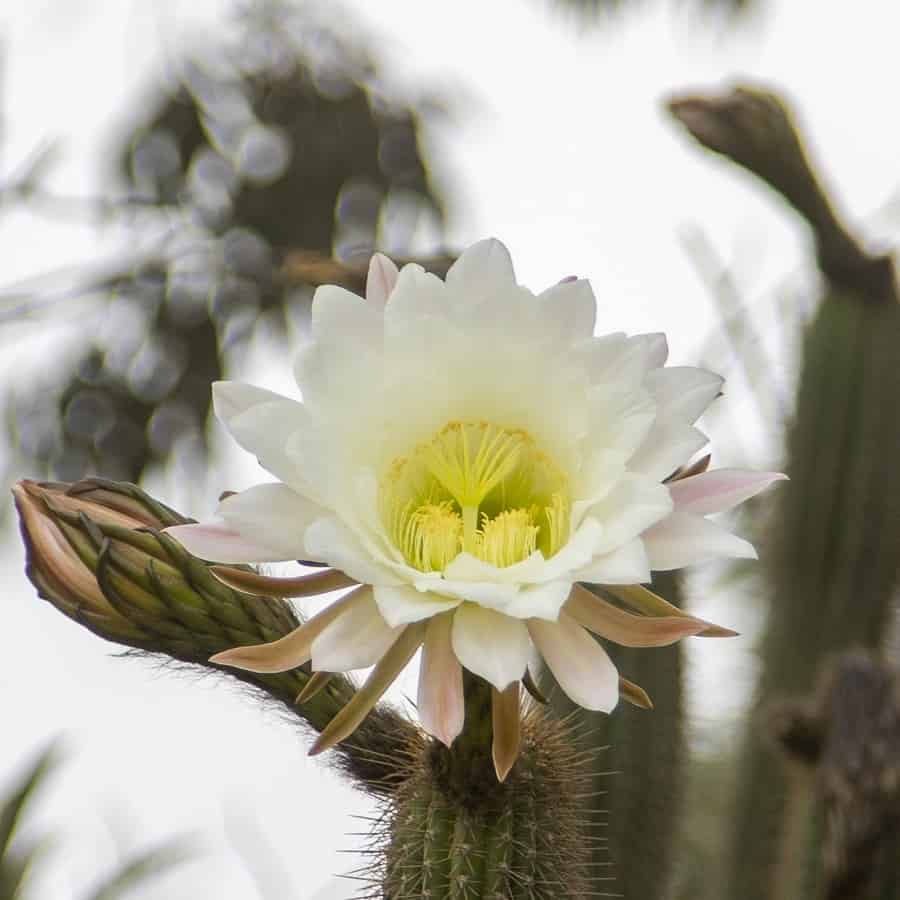
A night-blooming monster reaching over 6.5 feet, this multi-branched Chilean species is adorned with 10-15 ribs lined in 0.25-4 inch amber spines. The huge 8×6 inch white flowers are a sight to behold!
Trichocereus strigosus
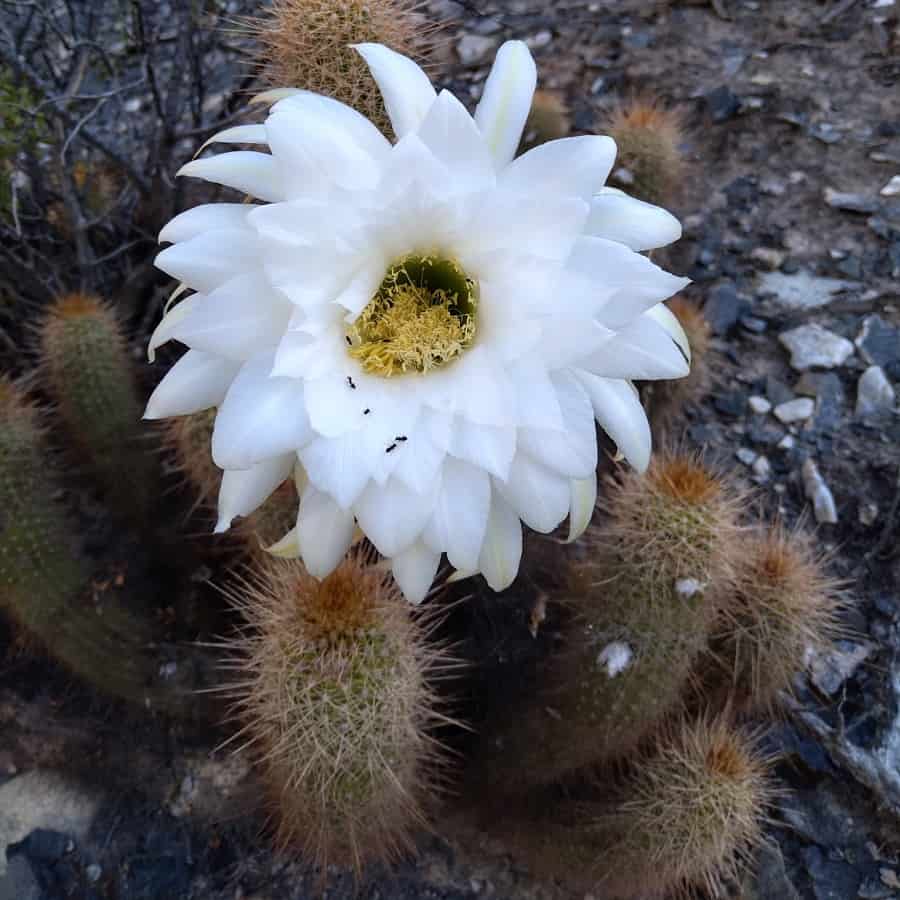
Fierce 2-inch spines in shades of yellow to reddish-brown armor the 15-20 ribbed, 2-3 inch thick stems of this night-flowering species from Argentina. A rare yellow-blooming form also exists.
Trichocereus tacaquirensis
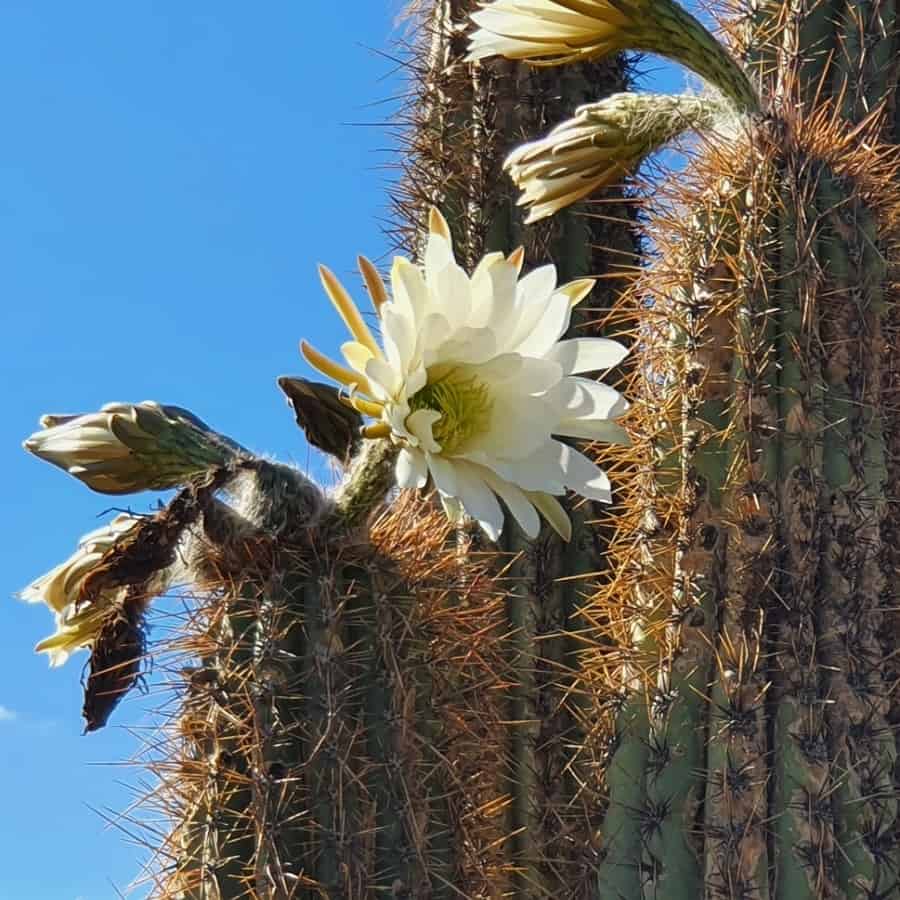
An arborescent beauty reaching 8-16 feet, this Bolivian subspecies complex exhibits diverse spine colors from white to reddish-brown and black. The huge 9-inch white to pink blooms truly dazzle.
Trichocereus tarijensis

A supremely spiny monolith from Bolivia and Argentina with 15-25 ribs sheathed in 1-inch to nearly 4-foot spines pointing downwards! Diameters can reach an incredible 20 inches.
Trichocereus terscheckii
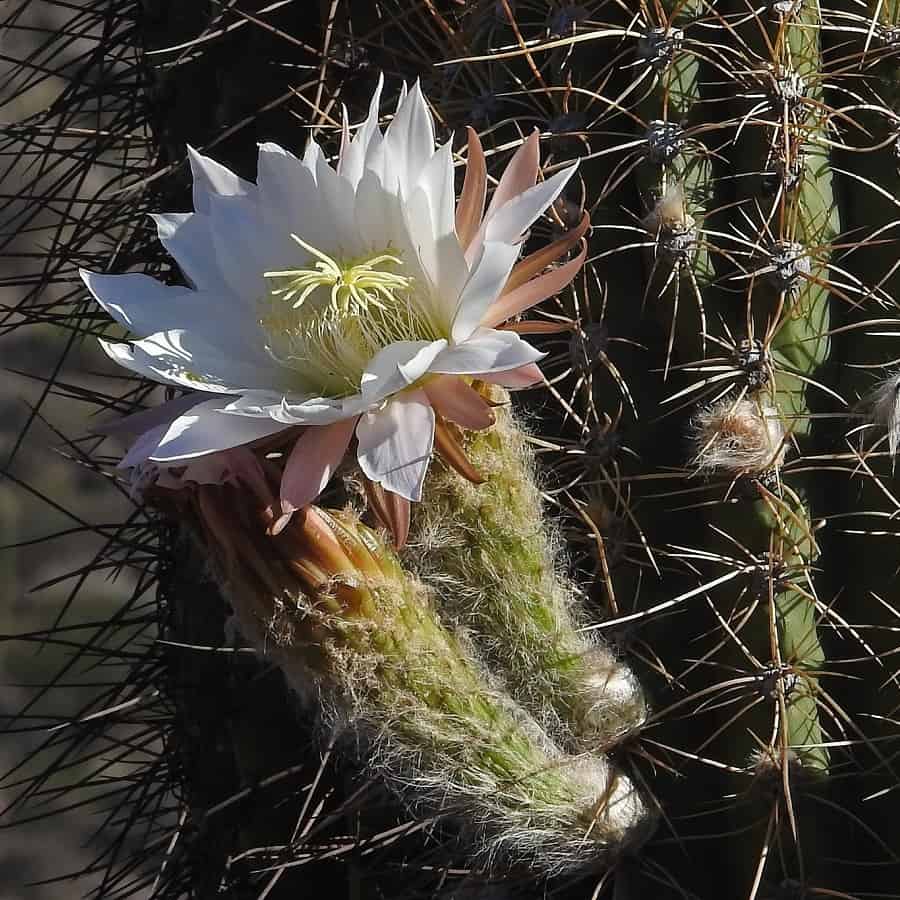
This Argentine tree cactus sprouts 2-4 foot side arms as it ages, able to reach 33-49 feet tall and nearly 2 feet thick. The yellow 4-inch spines and white 6-9 inch flowers adorn the 8-15 ribbed stems.
Trichocereus thelegonus
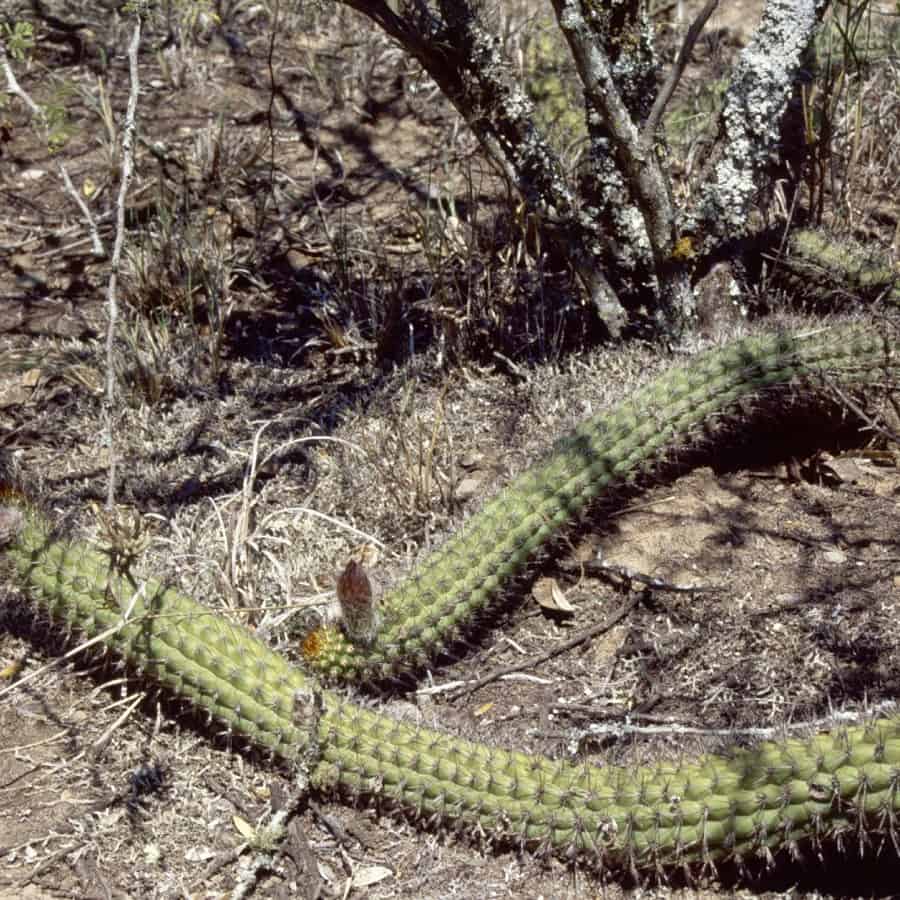
A real weirdo, this creeping 2-foot Argentinian has 12-13 angular ribs lined with 1-inch black-tipped spines. The massive 9×7 inch fragrant white blooms are a splendid sight!
Trichocereus tunariensis
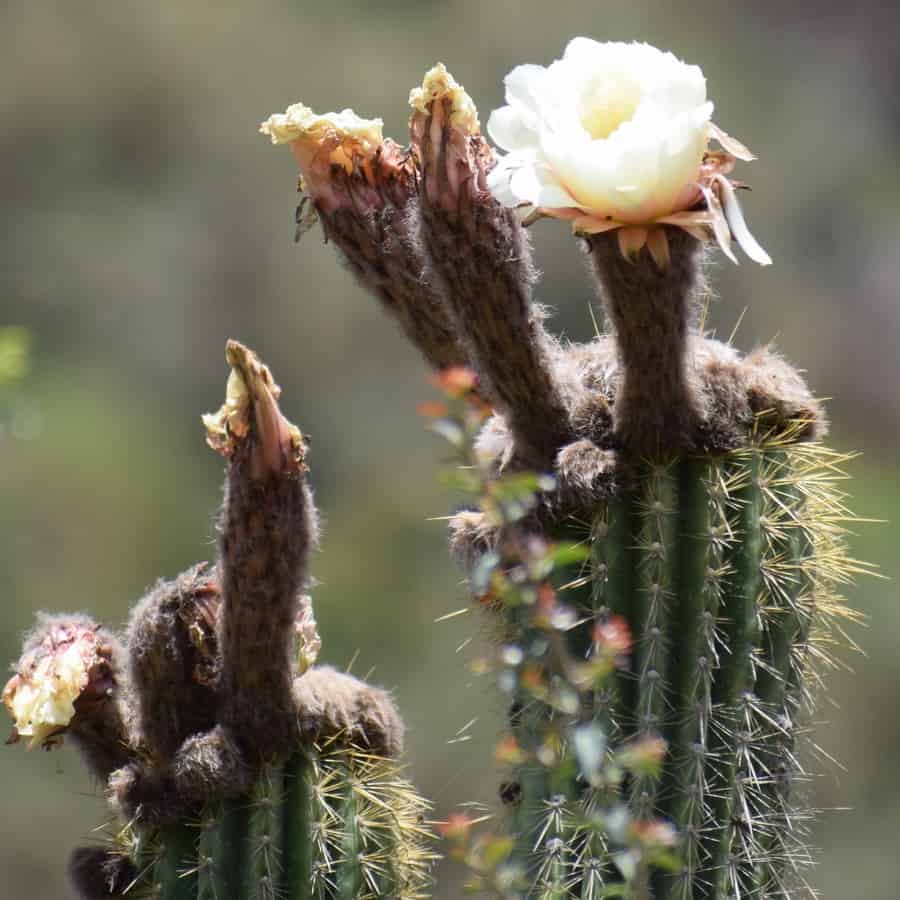
Trichocereus vollianus
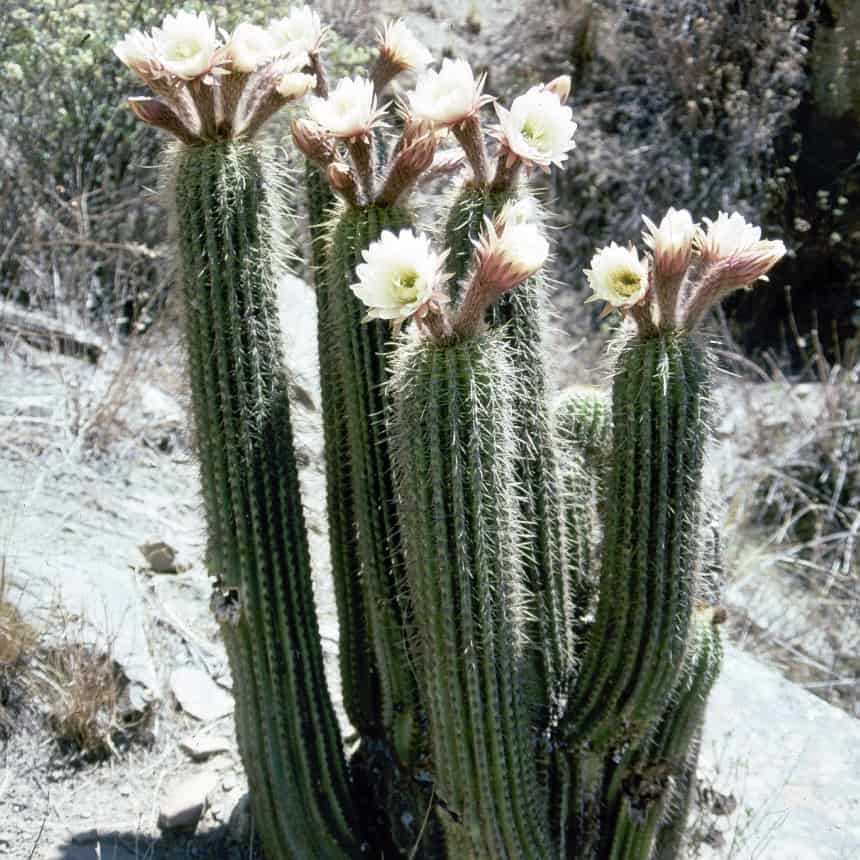
A bright green, shiny-skinned beauty from Peru with up to 13 ribs and delicate amber spines under an inch long. The white flowers reach up to 5 inches across on these 4-inch thick columnar stems.
Trichocereus walteri
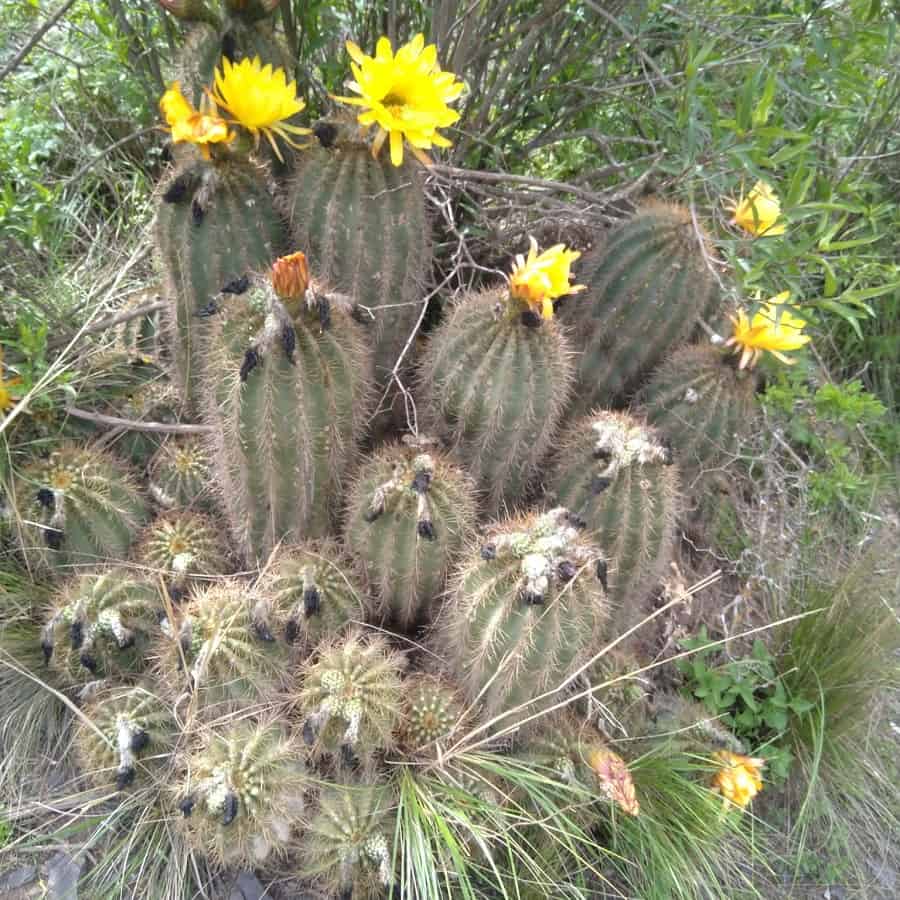
Trichocereus werdermannianus

Towering up to 16 feet, this blue-green Bolivian giant has 10+ ribs adorned with 2-4 inch yellow to brown spines. The huge 9-inch white flowers burst from the apex of the nearly 2-foot thick trunks.
Related Post:
1,000 Types of Cacti [With Pictures]
How to Care for Trichocereus Cacti
Light
One of the keys to a happy Trichocereus is plenty of sunlight. After their first year, these sun-lovers crave direct rays for 6-8 hours per day. If growing indoors, supplement with grow lights for 14-16 hours. But be gentle – young seedlings can get sunburned, so start them in light shade.
Water
Trichocereus species are champions at conserving moisture, going completely dormant over the winter from October to April. During this period, allow the soil to fully dry out to prevent rot. In the growing months, only water when the soil is bone dry, just until it becomes lightly moist. Good drainage is essential to avoid soggy, mushy cactus woes.
Soil
Like other cacti, Trichocereus prefer a slightly acidic, well-draining potting mix. A store-bought cactus or citrus blend is ideal, or make your own by mixing sand, gravel, peat moss, and perlite. A touch of humus can also help deter rot.
Fertilizer
While not mandatory, an occasional very diluted fertilizer can give your Trichocereus a healthy boost, especially as a seedling. Adults can handle stronger doses during the growing season – about once a month with a liquid cactus fertilizer.
Climate
True desert natives, Trichocereus are incredibly hardy, withstanding scorching 100°F+ heat and frosty temps down to around 14°F! But they’re happiest around 70°F. Be cautious of pests like fungal rots, root aphids, mealybugs and spider mites.
Pests and Diseases
Trichocereus are generally hardy plants, but can sometimes fall prey to fungal diseases causing rot or mushy stems, as well as pests like root aphids, mealybugs, and spider mites. Fungal black spots on the stems are another potential issue, though typically non-fatal. The key is regular inspection to catch any problems early.
Pruning
These columnar cacti can reach up to 6 feet tall, so pruning may be needed to control size. Also prune off any rotted, soft or pest-infected stems, as well as dead stems after blooming. Pruning encourages bushier, fuller growth.
Potting and Repotting
Trichocereus need repotting every 2-4 years, or annually if heavily fertilized. Repot seedlings after 1 year into a larger container. The best time is during the active spring/summer growing period.
Signs for repotting include roots poking out the drainage holes or a severely potbound plant. Choose a well-draining cactus potting mix a few inches wider than the current pot. Gently loosen the root ball before repotting to encourage new growth.
Propagating Trichocereus Species Plants
Excited to grow more of these beauties? Propagating Trichocereus from cuttings is a breeze:
- Snip off a cutting from a mature cactus and let it callus over for a few days.
- Plant the calloused cutting 2-3 inches deep in well-draining cactus soil.
- In 2-3 weeks, give it a gentle tug – resistance means new roots are forming!
You can also try seeds – simply sow them shallowly, keep moist at 80°F days/70°F nights, and await those tiny seedlings in about a month.
